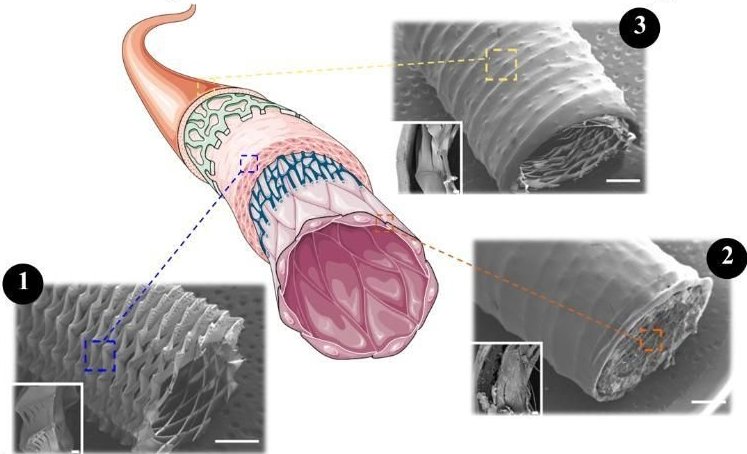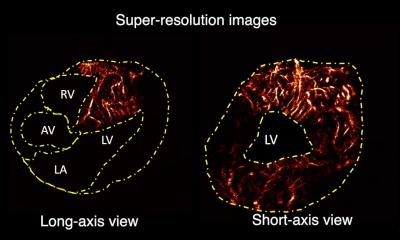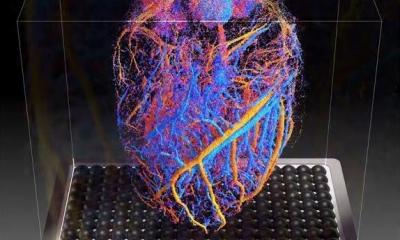
Image source: Trinity College Dublin; adapted from: Federici AS, Garcia O, Kelly DJ, Hoey DA; Advanced Functional Materials 2024 (CC BY 4.0)
News • Bioengineering
New vascular graft to replicate small-diameter blood vessels
Researchers from the AMBER SFI Centre for Advanced Materials and BioEngineering Research and Trinity College Dublin, led by Dr David Hoey, have successfully replicated the behaviour of a blood vessel and its guiding structure to regenerate damaged tissue.
The researchers, who recently published their work in international journal Advanced Functional Materials, used a melt electrowriting (MEW) technique to provide an innovative off-the-shelf alternative to address the unmet clinical need for small-diameter vascular grafts to help combat cardiovascular disease.
Cardiovascular disease is a leading cause of morbidity. Current treatments include vessel substitution using autologous/synthetic vascular grafts, but these commonly fail in small diameter applications, largely due to compliance mismatch and clot formation.
Utilising advanced biofabrication technologies such as melt electrowriting (MEW) we could produce tubular scaffolds, that when combined with a fibrinogen matrix, could not only replicate the behaviour of a blood vessel but could also act as a guiding structure to regenerate damaged tissue
David Hoey
In this research, a multicomponent vascular graft, that takes inspiration from native vessel architecture, was developed to overcome these limitations. Melt electrowriting (MEW) is used to produce tubular scaffolds with vascular-mimetic fiber architecture and mechanics, which is combined with a lyophilised fibrinogen matrix with tailored degradation kinetics to generate a hybrid graft.
Lead Investigator and study author Associate Professor David Hoey said: “We developed a novel multicomponent vascular graft that was inspired by the layered architecture of native blood vessels. Utilising advanced biofabrication technologies such as melt electrowriting (MEW) we could produce tubular scaffolds, that when combined with a fibrinogen matrix, could not only replicate the behaviour of a blood vessel but could also act as a guiding structure to regenerate damaged tissue. This exciting off-the-shelf graft meets clinical requirements and is therefore a promising solution for addressing the unmet need for small-diameter vascular grafts.”
The graft satisfies ISO implantability requirements, matches the compliance of native vessels, and re-establishes physiological flow with minimal clot formation in a preclinical model.
3D bioprinting has emerged as a promising technology for engineering 3D ‘living’ biological tissues for promoting bone and tissue regeneration. The overall goal of the five-year project TRANSITION led by AMBER’s Professor Daniel Kelly, funded under Science Foundation Ireland’s (SFI) Spokes programme, is to develop a new class of 3D-printed biological implants that will regenerate, rather than replace, diseased joints.
Source: Trinity College Dublin
23.08.2024











